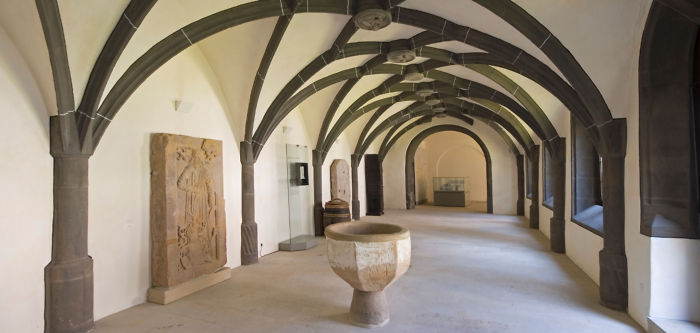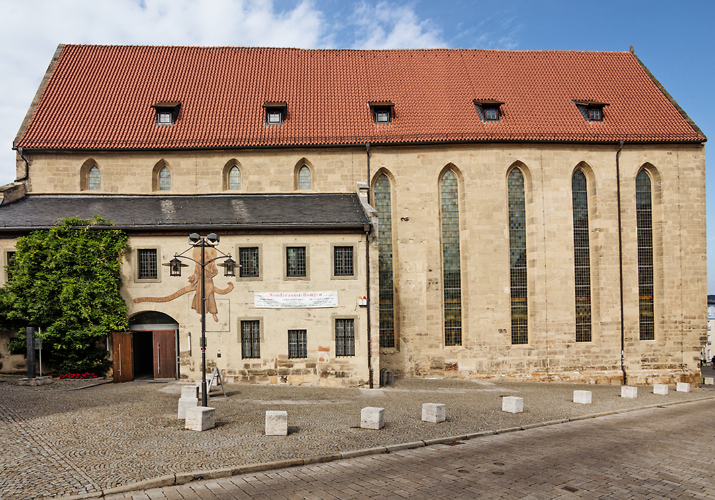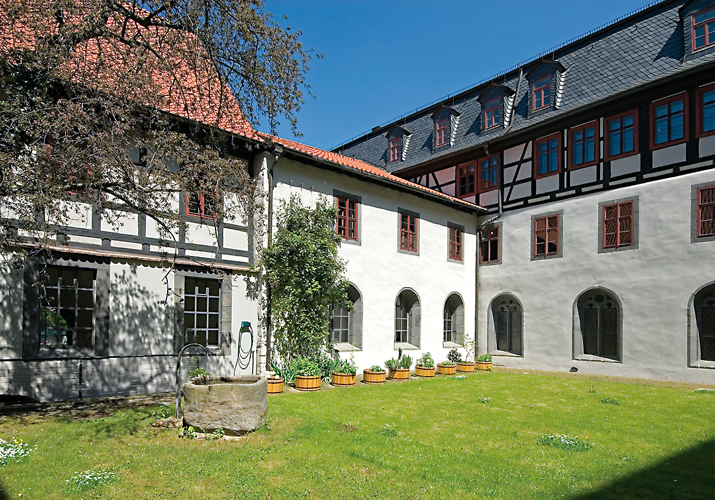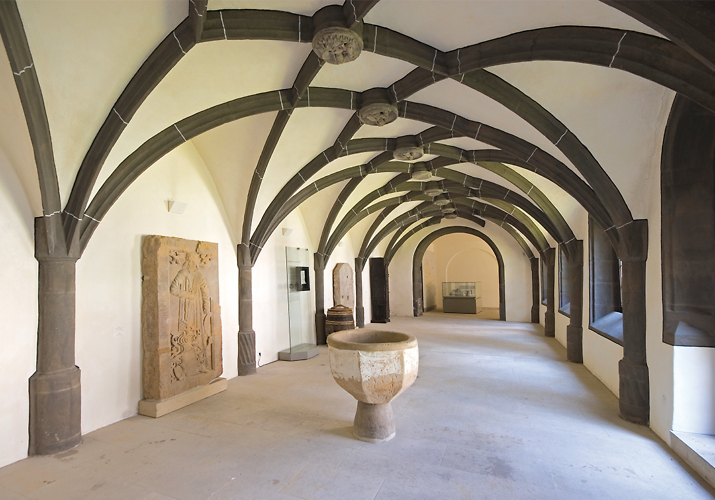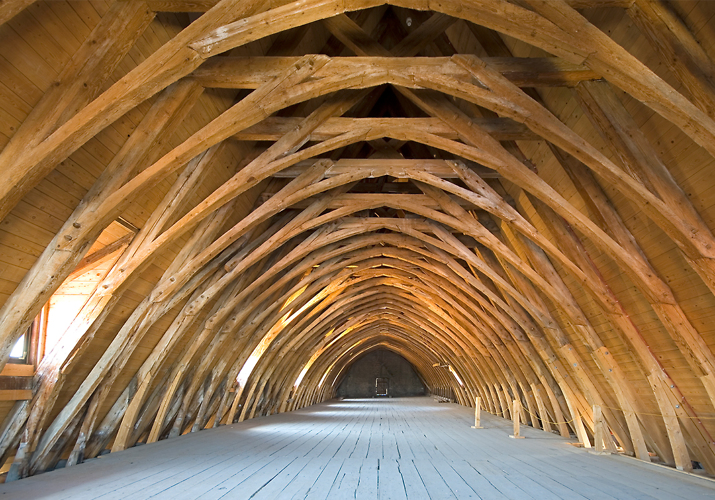The Town Museum (Münzplatz 5)
The Franciscan monastery, in which the Town Museum is now housed, was founded around 1250, on the western edge of the town by the Count of Schwarzburg. The Franciscan monks were members of the Ascetic Order. They lived in poverty and earned their subsistence by begging, which was considered in the Middle Ages to be a respectable activity. The Monks begged mainly in towns and concerned themselves more with pastoral care than other orders did. In spite of their poverty, they were popular with the citizens of Saalfeld because of their generosity.
The monastery was dispanded in the 16th Century during the Reformation. The Sylvester Lieb municipal Latin School moved into the rooms of the east wing. The former monastery remained an educational establishment until 1910, and then became the town’s High School.
In the middle of the 16th Century, on Elector Johann Friedrichs´s orders, the monastery became a mint, and silver, mined in the surrounding hills was turned into coins here. Under the name of “Imperial Mint”, it was used by all the Thuringian princes to fashion their coins. This meant that these coins were equal in status to regional coins from Leipzig, Berlin and Stettin, and in turn, this brought wealth and trade to the residential town.
The monastery complex, which was constructed according the strict building requirements of the Franciscan Order, still exists in its entirety. One particular rarity is the timber roof construction, which has been dated 1300. Since 1904, the cloisters and vaults of the former monastery have housed the Museum of Town and Regional History.
On show are works of late-gothic carving in the form of several winged altar-pieces as well as a collection of traditional Thuringian costumes. Emil Weiske’s zoological exhibits from the South Seas and New Guinea are also well worth seeing. Do visit the Town Museum. You are warmly invited!
From the Town Museum’s entrance turn left and walk along the Obere Torgasse. As its name suggests, you will now come directly to the “Upper Gate” or “Oberes Tor”
